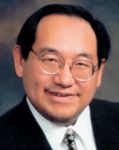Article
Optic disc examinations should be documented
Durham, NC—While there is widespread agreement on the importance of optic disc examination in the care of glaucoma patients, studies suggest there is considerable opportunity for improvement in documentation as well as in the accuracy and reproducibility of assessments, reported Paul P. Lee, MD, JD, professor of ophthalmology, Duke University, Durham, NC.

"We all know that examining the optic nerve is an essential part of taking care of glaucoma patients," Dr. Lee said. "In the Ocular Hypertension Treatment Study, half of the cases of progression occurred based on optic disc characteristics alone, without visual field loss. Every major ophthalmology organization worldwide has a very strong statement in favor of regular examination of the optic nerve and nerve fiber layers."
Despite this consensus, several chart review studies by Dr. Lee and his associates have suggested that these exams are often not being recorded for future reference and comparison.
However, the news isn't all bad.
"If we stretch that interval to 1 year before to 6 months after the initial diagnosis, then 94% involve an optic nerve head exam," Dr. Lee added.
Further, studies indicate that the rate of documentation varies tremendously and that practice type is a factor. Academic specialists' offices show an exam documentation rate over 95%, specialist rates are above 80%, while community, non-specialist offices document less than 40% of exams within the recommended interval of 2 years since the most recent exam.
Lack of documentation This lack of documentation raises the question of how clinicians can take better care of patients, given how many patients physicians see and the ability of all of them to remember exam features from patient to patient if they have no evidence of what the optic nerve looked like before the current examination, Dr. Lee noted.
Studies have also reviewed how documentation is done. The American Academy of Ophthalmology's preferred practice pattern and benchmarks recommend an optic nerve head photograph or drawing. Yet a photo or drawing is found in less than 30% of the charts in which there is some form of documentation of an exam, Dr. Lee said. He added that the estimated rate worldwide of optic nerve head photography is about 20% per year.
The reproducibility of these optic nerve observations is as much a concern as the rate of documentation, Dr. Lee said.
"It is quite possible that with good training and experience, and good use of techniques, you can have very accurate and reproducible assessments," he added, noting that accuracy can be further enhanced by the use of specific rating systems, such as the disc damage likelihood scale.
However, studies have shown a large spread in agreement on progression among individual physicians who have reviewed the same set of optic nerve photographs.
Recent data from an Australian study on undiagnosed glaucoma are indicative of the challenges ophthalmologists face in taking care of patients with glaucoma. Investigators found that in 60% of patients who met study criteria for glaucoma, the disease was undiagnosed.
Further, half of the individuals with undiagnosed glaucoma had seen an optometrist or ophthalmologist within the year preceding entry into the study, and almost all of them had some form of visual field defect.
"These are patients who probably have glaucoma according to study criteria that was, for whatever reason, not picked up in their visit," Dr. Lee said.
Improving the ability to make a correct, early diagnosis is becoming even more important in the field of ophthalmology, he added.
"As we move toward a standardized definition of glaucoma, we will need to have a more accurate and reproducible method of assessing the optic nerve," Dr. Lee said. "If we look at the challenges in front of us, we need to examine the optic nerve head and document it accurately. We need to put it in relationship to the severity of the disease.
Newsletter
Don’t miss out—get Ophthalmology Times updates on the latest clinical advancements and expert interviews, straight to your inbox.




